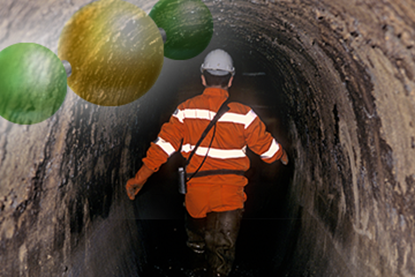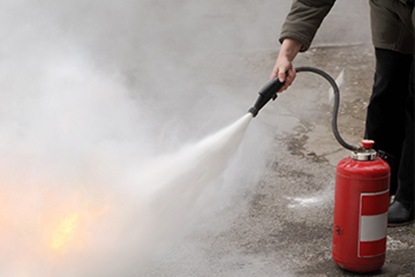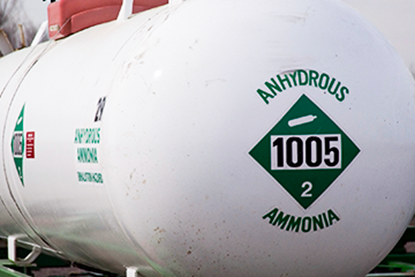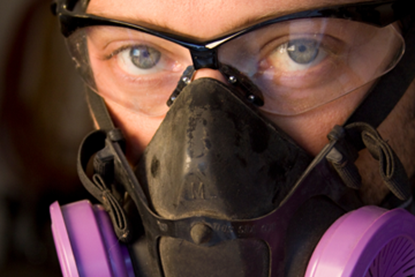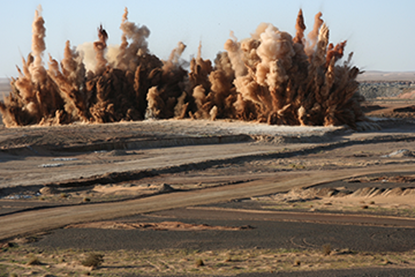You have no items in your shopping cart.
Awareness Courses
Occupational accidents and work-related diseases cost billions of dollars in lost productivity every year. If your employees face workplace hazards, you need to know the risks. UL EHSS has the training content you need to keep workers healthy, safe, and on-the-job.
Our Awareness modules are 15-20 minute overviews of each topic.
Hydrogen Sulfide (H2S) Awareness
You notice the faint smell of rotten eggs and see a co-worker collapse. Do you know what could be happening? How will you get help for your co-worker and avoid becoming another victim? In this course, you will get the answers to these questions. You will learn about the characteristics and dangers of hydrogen sulfide (H2S) and what to do if you suspect it is present. This training is ideal for workers in general industry, manufacturing and construction.
$29.95
Laser Safety Awareness
Lasers can present a variety of potentially serious hazards, including hazardous biological or chemical fumes given off by materials being lased and injury to the eyes and the skin from laser radiation. Lethal electrical and fire hazards can also be present with high-powered lasers. This course outlines the hazards that lasers present as well as how to work safely with and around them.
$29.95
Personal Protective Equipment (PPE) Awareness
Workplaces are designed to be relatively free from hazards. Hazards that cannot be eliminated are guarded to keep workers away. Workers wear their own form of guarding, or personal protective equipment (PPE), as a final layer of protection against workplace hazards. This course is ideal for all workers who use PPE.
$29.95
Fire Extinguisher Safety Awareness
If you were confronted with a fire in your workplace, would you know whether to fight or flee? If you decide to fight the fire, do you know what to do? Take this course to learn when to fight or flee a fire and how to choose and use fire extinguishers. Knowing what to do can save lives! Ideal learners are all employees.
$29.95
Ammonia Awareness
Ammonia can cause blindness, lung damage and death, but the good news is you can control your exposure to it. Take this course to learn how to safely identify, store and handle ammonia. You will also learn what to do in the event of an ammonia exposure or leak. This course is ideal for anyone who works with or near ammonia.
$29.95
Arsenic Awareness (US)
OSHA requires inorganic arsenic training whenever employees are exposed to arsenic at or above a certain level. This course explains the possible health effects related to inorganic arsenic and how to reduce and/or eliminate the exposures that can lead to these health effects.
$29.95
Blasting Area Awareness
Blasting areas can be dangerous. It’s important that the people who work on sites that have blasting know the hazards, process and what to do in emergencies. This is an awareness course about the activities that occur in a blasting area. This course is not designed to qualify blasters or their crew. It is aimed at all personnel who might be at a site where blasting activities occur.
$29.95
Bloodborne Pathogens Awareness
Contact with blood or other infectious materials puts you at risk for contracting potentially deadly, incurable diseases. Take this course to learn what bloodborne pathogens are, the risk they present, and general steps you should take to ensure your protection after potential exposure. This course is not intended to teach universal precautions. You need additional information, vaccinations/immunizations, and PPE to provide first aid or handle/clean up BBP and OPIM. Ideal learners include all workers.
$29.95
Cannabis Awareness
Are the effects of cannabis different than other controlled substances? What do I need to know about cannabis as it relates to workplace safety? Take this course to learn the answers to these and other questions you may have about cannabis. We will talk about the properties of cannabis, its effects and strategies you can use at your workplace to keep everyone safe. This course is ideal for all learners.
$29.95

